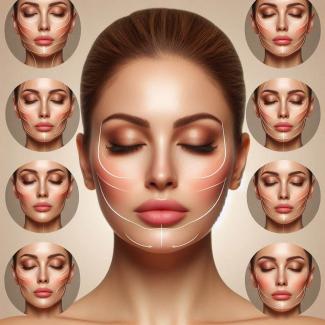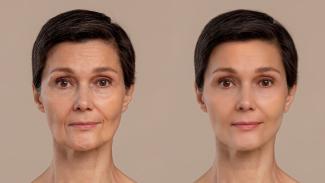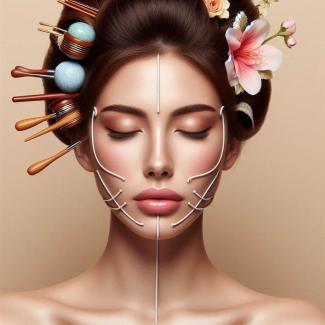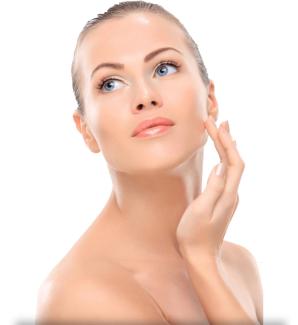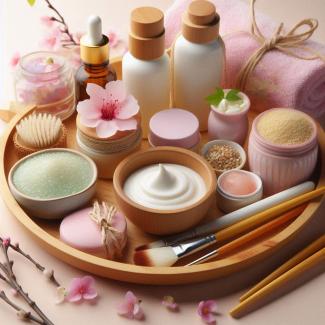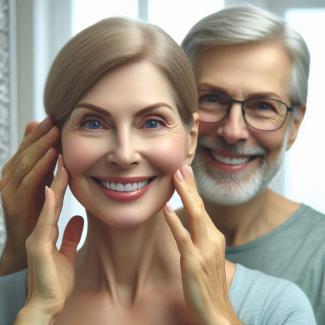
Facial yoga is a natural, non-invasive technique that combines traditional yoga principles with facial exercises designed to tone and strengthen the muscles in the face. Unlike surgical procedures or chemical treatments, facial yoga works by engaging and stimulating the underlying facial muscles to enhance their firmness and elasticity, thereby reducing the appearance of wrinkles and promoting a more youthful appearance.
1.2 The History of Facial Yoga
Facial exercises have roots in ancient practices from various cultures, such as India and China, where they were used to enhance beauty and health. This section would delve into how facial yoga evolved from these ancient practices and gained popularity in the modern wellness industry, particularly as a response to the growing demand for natural beauty solutions.
1.3 The Impact of Facial Yoga on Modern Skincare Practices
Facial yoga has influenced modern skincare by introducing the concept of muscle-based facial rejuvenation. This section would explore how facial yoga has become integrated into various beauty routines, influencing both consumers and professionals in the skincare industry.
Chapter 2: The Science Behind Facial Aging
2.1 Anatomy of the Face
An in-depth exploration of the facial muscles, including the frontalis, orbicularis oculi, zygomaticus major and minor, orbicularis oris, buccinator, and platysma. Understanding these muscles is crucial for performing facial yoga exercises effectively, as each exercise targets specific muscles to improve facial contours and reduce signs of aging.
2.2 How Aging Affects the Face
As we age, the skin loses elasticity, and the facial muscles weaken, leading to sagging skin and the formation of wrinkles. This section would provide a detailed analysis of the aging process, including the breakdown of collagen and elastin, and how facial yoga can help counteract these effects by toning the underlying muscles.
2.3 Physiological Changes in the Skin
Discuss the structural changes in the skin's layers (epidermis, dermis, and hypodermis) over time and how facial yoga can promote blood circulation and enhance skin health by delivering more oxygen and nutrients to these layers.
Chapter 3: Benefits of Facial Yoga
3.1 Aesthetic Benefits
Facial yoga can lead to a noticeable reduction in wrinkles, improved skin tone, and enhanced facial contours. This section would cite scientific studies, such as those published in peer-reviewed journals, demonstrating the effectiveness of facial exercises in reducing the signs of aging.
3.2 Health Benefits
Beyond aesthetics, facial yoga improves overall skin health by increasing circulation and lymphatic drainage, reducing puffiness, and promoting detoxification. It can also help alleviate tension headaches and neck pain by relaxing the facial and neck muscles.
3.3 Psychological Benefits
Engaging in facial yoga can improve mental well-being by reducing stress and boosting self-confidence. This section would include testimonials from practitioners who have experienced these psychological benefits firsthand.
Chapter 4: Detailed Step-by-Step Instructions for the Best Facial Yoga Exercises
4.1 The Forehead Smoother
Target Area: Forehead, horizontal lines.
Instructions:
- Place your hands on your forehead with your fingers pointing upward.
- Gently pull the skin on your forehead downwards while trying to raise your eyebrows.
- Hold the position for 10 seconds and release.
- Repeat the exercise 10 times.
Benefits: This exercise helps to smooth out horizontal lines on the forehead by strengthening the frontalis muscle and improving skin elasticity.
4.2 The Brow Lifter
Target Area: Eyebrows, upper eyelids.
Instructions:
- Place your index and middle fingers just above your eyebrows.
- Apply gentle pressure while trying to lift your eyebrows against the resistance.
- Hold the position for 10 seconds, then release.
- Repeat 10 times.
Benefits: Helps lift sagging eyebrows and upper eyelids, reducing the appearance of droopy eyes.
4.3 The Cheek Plumper
Target Area: Cheeks, sagging skin.
Instructions:
- Inhale deeply and puff out your cheeks.
- Transfer the air from one cheek to the other, holding each for 5 seconds.
- Exhale and relax.
- Repeat the exercise 10 times.
Benefits: Strengthens the buccinator muscles, helping to lift and firm the cheeks, giving a fuller, more youthful appearance.
4.4 The Smile Smoother
Target Area: Nasolabial folds.
Instructions:
- Place your index fingers at the corners of your mouth.
- Smile as wide as you can with your lips closed.
- Hold the position for 10 seconds, then relax.
- Repeat 10 times.
Benefits: Reduces the depth of nasolabial folds by toning the muscles around the mouth.
4.5 The Jawline Definer
Target Area: Jawline, neck.
Instructions:
- Tilt your head slightly back and look up.
- Push your lower jaw forward and hold for 10 seconds.
- Relax and return to the starting position.
- Repeat 10 times.
Benefits: Strengthens the platysma muscle, helping to define the jawline and reduce the appearance of a double chin.
4.6 The Eye Firmer
Target Area: Under-eye area, crow’s feet.
Instructions:
- Place your index fingers on the outer corners of your eyes.
- Gently stretch the skin outwards and squint your eyes tightly.
- Hold for 10 seconds and release.
- Repeat 10 times.
Benefits: Helps reduce under-eye puffiness and smooth out crow’s feet by toning the orbicularis oculi muscle.
4.7 The Lip Shaper
Target Area: Lips, mouth area.
Instructions:
- Pucker your lips and hold them tightly together.
- Smile widely while keeping your lips pressed.
- Hold for 10 seconds, then relax.
- Repeat 10 times.
Benefits: Improves the shape of the lips and reduces vertical lines around the mouth by strengthening the orbicularis oris muscle.
Chapter 5: Do Facial Exercises Really Work?
5.1 Overview of Scientific Research
This section would provide an in-depth review of the latest scientific studies on facial exercises, such as the 2018 study published in JAMA Dermatology, which found that regular facial exercises can lead to fuller cheeks and a more youthful appearance after 20 weeks.
5.2 Expert Opinions and Assessments
Incorporating interviews with dermatologists, cosmetologists, and aesthetic doctors, this section would present various perspectives on the effectiveness of facial yoga, discussing both its benefits and limitations.
5.3 Personal Testimonials and Success Stories
Including anecdotes from individuals who have practiced facial yoga and experienced significant results, this section would provide real-life evidence of the effectiveness of these exercises.
Chapter 6: How Often Should We Perform Facial Exercises?
6.1 Recommended Frequency for Beginners
For those new to facial yoga, it’s advisable to start with 3-5 sessions per week, each lasting 10-15 minutes. Emphasizing proper technique and gradually increasing intensity is crucial.
6.2 Recommended Frequency for Advanced Practitioners
Advanced users can practice facial yoga daily for 20-30 minutes, incorporating more challenging exercises and resistance techniques to enhance results.
6.3 Incorporating Facial Yoga into Your Daily Routine
This section would offer tips on how to seamlessly integrate facial yoga into your daily life, such as during your morning skincare routine or as a relaxing evening activity.
Chapter 7: The Long-Term Benefits of Regular Facial Exercises
7.1 Short-Term Benefits
Discuss the immediate effects of facial yoga, such as increased circulation, a more radiant complexion, and an instant facial lift.
7.2 Long-Term Benefits
Provide a detailed account of the long-term benefits, including reduced wrinkle depth, improved skin elasticity, and a more youthful appearance over time.
7.3 Comparisons with Other Methods
Compare facial yoga with other beauty treatments, such as cosmetic surgeries, injections, and topical creams, highlighting the pros and cons of each and how facial yoga can complement or replace these methods.
Chapter 8: Should You Use a Face Cream While Performing Facial Yoga?
8.1 The Benefits of Using Creams During Facial Yoga
Explain how using a face cream during facial exercises can enhance the effects by providing hydration, improving skin elasticity, and facilitating smoother movements.
8.2 Choosing the Right Face Cream
Offer advice on selecting the appropriate face cream based on skin type and specific needs, recommending creams with active ingredients like retinol, hyaluronic acid, vitamin C, and peptides.
8.3 How to Properly Apply Cream Before Exercising
Provide step-by-step instructions on how to apply face cream before starting your facial yoga routine, ensuring maximum absorption and effectiveness.
Chapter 9: Tips for Performing Facial Exercises Correctly
9.1 Proper Technique and Form
Detail the importance of using correct techniques, emphasizing controlled movements and the use of a mirror to monitor form.
9.2 The Importance of Breathing During Exercises
Discuss how proper breathing enhances the effectiveness of facial exercises by promoting relaxation and better oxygenation of the muscles.
9.3 Common Mistakes and How to Avoid Them
Highlight common errors, such as overstretching the skin or applying too much pressure, and provide guidance on how to avoid these mistakes.
9.4 Customizing Exercises for Individual Needs
Offer advice on how to tailor facial yoga exercises based on individual factors like age, skin type, and specific concerns (e.g., sensitivity, wrinkles around the eyes, etc.).
Chapter 10: Advanced Techniques and Combining Facial Yoga with Other Methods
10.1 Using Resistance and Isometric Holds
Explore advanced facial yoga techniques that involve resistance and isometric holds to increase muscle strength and tone.
10.2 Combining Facial Yoga with Massage Techniques
Suggest combining facial yoga with massage methods like Gua Sha, facial cupping, or manual massage to enhance the benefits and promote relaxation.
10.3 Integrating with Other Holistic Practices
Discuss how facial yoga can be part of a holistic beauty regimen that includes meditation, aromatherapy, a healthy diet, and lifestyle practices for overall well-being.
Chapter 11: Making Facial Yoga a Part of Your Daily Life
11.1 Integrating Facial Yoga into Your Lifestyle
Summarize the key points and encourage readers to make facial yoga a regular part of their beauty and wellness routine, emphasizing its long-term benefits for both appearance and well-being.
11.2 Commitment and Expectations
Discuss the importance of consistency and patience in achieving results with facial yoga, and how it can become a sustainable part of one’s lifestyle.
11.3 Future of Facial Yoga
Speculate on the future trends in facial yoga and its growing influence in the beauty industry, as more people seek natural and non-invasive alternatives to maintain their youthful appearance.

